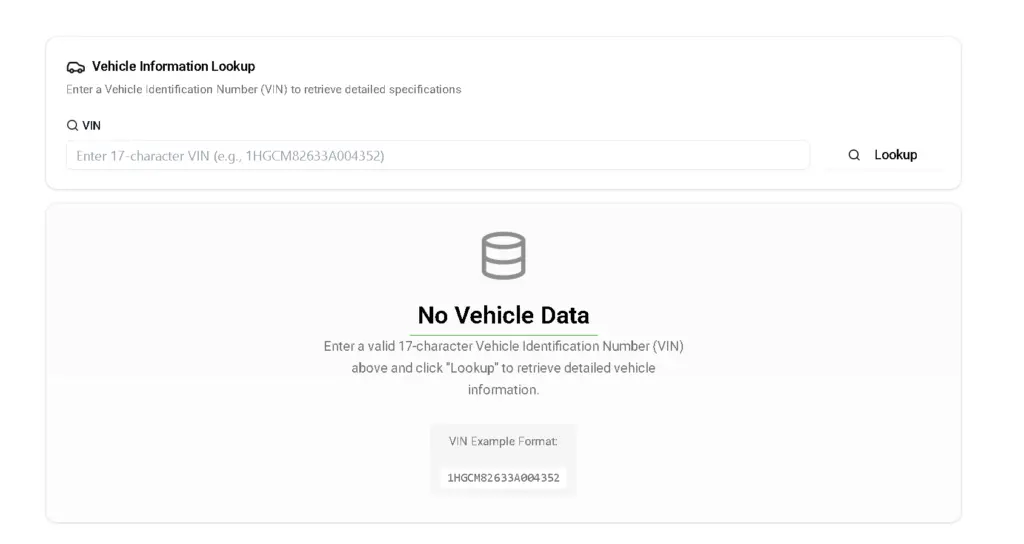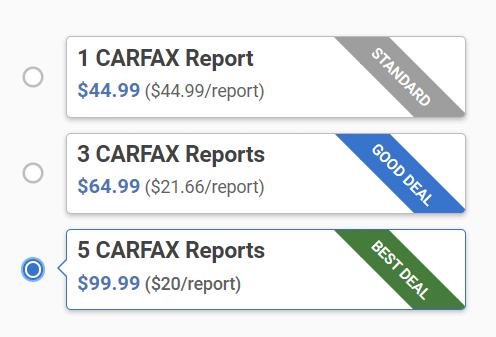Every year, thousands of car buyers fall victim to costly mistakes that could have been easily avoided with one simple step: VIN decoding. Without properly checking a vehicle identification number, buyers risk purchasing vehicles with hidden problems, incorrect specifications, or even stolen cars. Therefore, it is important to know how to decode a VIN number.
According to the report, in just the first five months of 2025, Ford alone issued 45 recall orders and is on track to surpass 128 by year-end, highlighting the critical need for every car buyer to decode the VIN before purchase.
The solution is simple: always decode the VIN before finalizing any vehicle purchase. This 17-character code reveals details such as engine type, safety features, manufacturing information, and vehicle history records. Let’s dive into it.
What is a VIN Number and Why Does It Matter?
A Vehicle Identification Number (VIN) is a unique 17-character code assigned to every vehicle manufactured after 1981. This code contains critical information about the vehicle’s origin, specifications, and history. For car buyers, understanding the VIN is essential for making informed purchasing decisions and avoiding costly mistakes.
The VIN system follows the ISO 3779 standard established by the International Organization for Standardization. This global standard ensures consistency across all manufacturers, allowing anyone to decode vehicle information regardless of the brand or country of manufacture. In addition, we have a cheap Carfax report tool, which helps you with reports at affordable pricing.
How do you find your vehicle number?
Here’s how you can find your VIN number:
- Dashboard (Driver’s Side)
Look through the windshield on the driver’s side—typically where the dashboard meets the windshield base. - Driver-Side Door Jamb
Open the driver’s door and check the door frame or door post (often near the latch or below the side mirror area). - Engine Block
Some manufacturers stamp the VIN directly onto the engine block, usually on the front or side. - Steering Column (optional addition)
On some older vehicles, the VIN may be etched into the steering column. - Vehicle Documents
Found on the:- Vehicle title
- Registration documents
- Insurance papers
- Bill of sale
- Floorboard (Under Seat or Carpet)
Some vehicles have the VIN stamped into the floor frame, under the driver’s seat or carpet. - Firewall
The metal panel separating the engine bay and cabin may have a VIN plate or stamping. - Chassis Frame
Especially in trucks or commercial vehicles, the VIN may be stamped onto the vehicle’s frame rails or cross member. - Spare Tire Compartment (less common)
Some vehicles hide a VIN label near the spare tire well or under the trunk mat.
Step-by-Step VIN Decoding Process
Step 1: Go To CheapCarfax VIN Decoder Tool
- Find the VIN number using the locations mentioned above. Ensure you record all 17 characters accurately, as even one incorrect character can lead to inaccurate results.
- Head over to Cheap Carfax VIN Decoder .
Step 2: Enter Your VIN
- This comprehensive tool provides detailed vehicle specifications, manufacturing information, and helps you access key vehicle information quickly and accurately.
- Enter 17 digits VIN number in the tool to get more information.
- Click on Lockup on the right side to get car details

Step 3: What you can expect
This VIN decoder service processes your vehicle identification number and returns essential details including make, model, engine type, body style, safety features, and manufacturing specifications. This instant access to vehicle details makes it easy for car buyers to verify vehicle information before making a purchase decision.
Using VIN Information for Car Buying Decisions
1. Pre-Purchase Verification
Before finalizing a used car deal, it’s essential to validate the vehicle’s details using the VIN. A proper VIN decoder will help:
- Confirm that the vehicle’s specifications (like engine type, trim level, and transmission) match the seller’s claims.
- Verify the model year and manufacturing date, which are critical for understanding depreciation and parts compatibility.
- Detect any discrepancies between the listed features and actual build, helping you avoid potentially fraudulent listings.
2. Insurance and Documentation
VIN information plays a major role in ensuring smooth ownership transfer and legal compliance:
- Make sure the VIN listed on the vehicle’s title and registration matches the physical vehicle.
- Insurance companies use VIN data to calculate risk and premiums — incorrect data can lead to denied claims or higher rates.
- Verify that the VIN is properly registered and free from liens, salvage history, or active recalls.
3. Value Assessment
A complete and accurate VIN decode gives insight into a vehicle’s true value. This helps:
- Determine a fair market price based on model, trim, and history.
- Identify rare packages or upgrades that can add value, such as performance features or limited editions.
- Assess the vehicle’s condition relative to its age, mileage, and usage type (e.g., fleet vs. personal).
Don’t risk buying a used car without knowing its full history. Whether you’re checking for accidents, ownership records, or title issues, a reliable vehicle history report can save you from costly surprises. Get instant access to accurate, affordable, and detailed car reports at CheapCARFAX.net — starting at just $5.99. Make smarter car-buying decisions today with Cheap Carfax.
Final Verdict
Mastering VIN decoding is an essential skill for any car buyer. This vehicle security code provides valuable insights into a vehicle’s history, specifications, and authenticity. By understanding how to properly decode and interpret VIN information, you can make more informed decisions and avoid potential problems. We also have a Ford, Mercedes, and Porsche VIN decoder.




